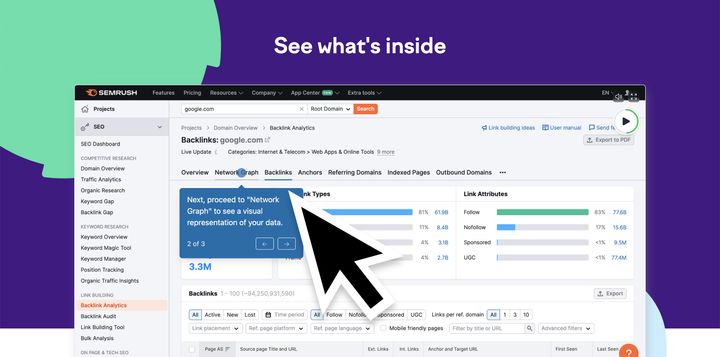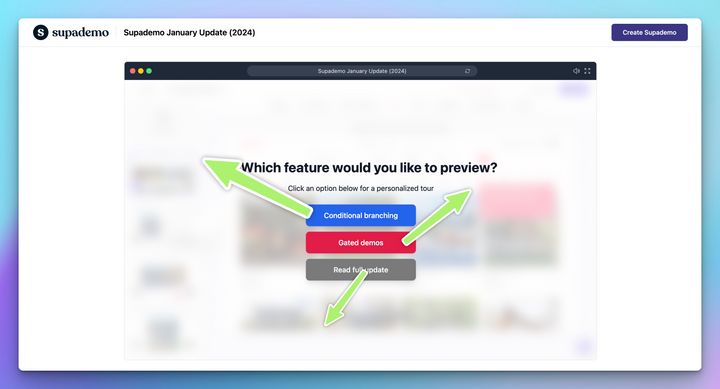Importance of Customer Retention Rate
Before diving into the how-tos, let's take a moment to understand the concept at hand.
Definition of Customer Retention Rate
Customer Retention Rate (CRR) can be defined as the percentage of customers a company retains over a specific time period. Essentially, it's a measure of how successful a company is in keeping its customers from defecting to competitors.
Significance of Customer Retention for Business Success
The importance of customer retention cannot be overstated. Here's why:
- Higher Profitability: Studies show that acquiring a new customer can be up to 25 times more expensive than retaining an existing one. Not to mention that returning customers are more likely to spend more and make frequent purchases, adding to a business’s profitability.
- Building Trust: Retained customers are familiar with your product and services, therefore, there's a level of trust built. This trust equates to brand loyalty that can be leveraged to create brand advocates.
- Valuable Feedback: Repeat customers understand your product and services much better and can provide insights or feedback that can help improve your offerings.
In a nutshell, focusing on increasing your customer retention rate will lead to sustainable business growth and success.
Calculating Customer Retention Rate
Understanding how to calculate your customer retention rate takes a bit of effort, but once you master it, you'll have a powerful tool in your business toolbox.
Formula for Calculating Customer Retention Rate
The formula for calculating your customer retention rate is pretty straightforward:
1. Start with the number of customers at the end of a period (E)
2. Subtract the number of new customers acquired during that period (N)
3. Then, divide the result by the number of customers at the start of the period (S)
4. Multiply by 100 to get the percentage
So it looks like this: ((E-N)/S) X 100 = Customer Retention Rate
Gathering Necessary Data for Accurate Calculation
Accurate calculation relies on having the right data to input into your formula. This data typically includes:
1. The number of customers at the beginning of a specific period (S)
2. The number of customers acquired during this period (N)
3. The number of customers at the end of this period (E)
Regularly tracking and documenting this data helps to provide a true reflection of your customer retention rate, thereby enabling you to apply various strategies for improvement.
Strategies to Improve Customer Retention
Driving your customer retention rate requires deliberate efforts and continuous improvement in all aspects of your customer journey. Here are some key strategies that can help boost your retention rate:
Enhancing Customer Experience
One of the easiest ways to retain customers is by providing them with a good experience every time they interact with your business. This involves offering high-quality products or services, delivering exceptional customer service, and ensuring overall customer satisfaction. Make it a point to listen to your customer feedback and improve accordingly. Regularly track customer satisfaction metrics such as Net Promoter Score (NPS) or Customer Satisfaction (CSAT) scores to identify areas of improvement.
Implementing Personalized Marketing Campaigns
In today's digital age, personalized marketing is key to retaining your customers. Consumers appreciate it when brands understand their needs and preferences. By analyzing customer behavior data, you can develop targeted marketing campaigns that resonate with your customers on a deeper level. For example, personalized emails and product recommendations based on a customer's browsing history can significantly improve customer engagement and loyalty.
Building Strong Customer Relationships through Effective Communication
Regular, effective communication is critical in cultivating strong customer relationships. This involves responding promptly to customer queries and complaints, being transparent in your communication, and keeping customers informed about product updates or company news. A CRM system can be very useful in maintaining customer communication records and ensures nothing slips through the cracks. Remember, it’s your job to make customers feel valued and appreciated, as these are key to nurturing customer loyalty and ultimately, increasing your customer retention rate.
Foster Customer Loyalty
Loyalty from customers doesn't just happen — it’s something that you cultivate with time, care, and strategic planning. Let’s examine three effective strategies that can help shape this desired loyalty.
Creating a Loyalty Program
The first step towards gaining customer loyalty is to create an attractive and rewarding loyalty program. This often involves developing a system where customers can earn points that translate into some type of reward. This could be discounts, gifts, or special customer privileges. Remember, a compelling loyalty program is one that keeps your customers coming back for more by rewarding their repeat business. Plus, it gives clients a sense of belonging, which often bolsters loyalty.
Offering Exclusive Rewards and Discounts
Secondly, offering exclusive rewards and discounts can go a long way towards fostering customer loyalty. When customers feel like they're getting exclusive perks, they're more likely to stay with your brand. This could range from early access to new products, members-only discounts, or specially curated items. Not only does this entice customers to continue buying from you, it also generates excitement around your products or services.
Providing Excellent Customer Service
Lastly, the cornerstone of customer loyalty lies in providing excellent customer service. Consistently ensuring that you meet or exceed customer expectations will inevitably cultivate loyalty. This involves communicating effectively, addressing concerns promptly, and going above and beyond to ensure your customers have a satisfying experience. After all, customers are more likely to stay loyal to companies that treat them like a valued part of their business.
Increasing Customer Satisfaction
Maintaining high customer satisfaction is a vital aspect of improving your customer retention rate. By focusing on this area, you are more likely to create satisfied, loyal customers who are more likely to stick around. The following strategies can make a huge difference.
Conducting Customer Satisfaction Surveys
One of the best ways to gauge customer satisfaction is to ask your clientele directly. You can't solve their problems if you don't know what those problems are. Develop customer satisfaction surveys that ask targeted, precise questions about your products, services, and customer service.
• Implement regular usage of these surveys
• Use a variety of formats, like phone calls, emails, and online surveys.
• Make sure to ask actionable questions – ones that yield information you can use to improve.
Analyzing Feedback and Implementing Improvements
Once you receive customer feedback, it's important to analyze it and use it for process enhancement. Identifying areas where you excel or lack is key for improvement. Bear in mind that complaints are opportunities for betterment. Use the data from the surveys to drive positive changes and track improvements over time.
Delivering Quality Products or Services Consistently
Lastly, it may seem obvious, but delivering a high-quality product or service consistently is essential. Customers will stay loyal if you consistently meet or exceed their expectations. Continually evaluate and refine your products and services to ensure that your performance is always up to the mark. Keep improving, keep growing!
Accelerating Business Growth through Customer Retention
Understanding the significant role of customer retention gives businesses the power to accelerate growth and improve profitability.
The Impact of Customer Retention on Profitability
High customer retention rates often result in increased profitability for your business. Here's why:
• Decreased Marketing Costs: Acquiring a new customer is five times as expensive as retaining an existing one. So the longer you retain a customer, the more profitable they become.
• Increased Purchase Frequency: Loyal customers tend to buy more often and try different products or services you offer.
• More Resilience: Businesses with high customer retention can better weather economic downturns since loyal customers often stick around even during tough times.
Utilizing Customer Retention Data to Identify Growth Opportunities
Customer retention data isn't just a number. It represents real people and real behaviors that, when analyzed correctly, can reveal growth opportunities for your business. For example, if you find a segment of customers who consistently come back for a specific product or service, consider focusing marketing efforts on that area to draw in more similar customers.
Leveraging Customer Referrals and Positive Reviews
Happy customers are your best advocates. They're more likely to refer others to your business and leave positive reviews, both of which increase your reputation and attract new customers. Instead of spending a fortune on advertising, invest in strategies aimed at improving customer retention, because the benefits ripple out far beyond a simple transaction. Through excellent customer service, a quality product, or even a well-timed thank you note, you create happy customers who will support and grow your business.
Conclusion
Customer retention plays a vital role in the growth and long-term sustainability of your business. It helps to build a solid customer base, encourages repeat purchases, and facilitates business prosperity. Customer retention should therefore be more than just a metric, but a fundamental part of your customer relations strategy.
Recap of the Importance of Customer Retention Rate
Calculating your customer retention rate allows you to understand better how much of your initial customers are still with you over time. It provides insight into the effectiveness of your customer care approach and the overall value your business provides. The higher the rate, the more loyal customers you have who stick around and contribute to your revenue stream. It's a key metric that can profoundly impact the total number of sales and profitability of your business.
Summarizing Key Strategies to Improve Customer Retention
Improving customer retention means implementing strategies that ensure customer delight. These include:
- Providing excellent customer service: Making your customers feel valued and esteemed.
- Offering personalized experiences: Customizing your services to match individual customer preferences.
- Rewarding customer loyalty: Implementing loyalty programs that provide incentives for repeat purchases.
Encouraging Businesses to Prioritize Customer Satisfaction and Loyalty
Finally, businesses must prioritize customer satisfaction and loyalty in their operations. The experience a customer has with your business can make all the difference in whether they continue to patronize your business or move to a competitor. Prioritizing customer loyalty and satisfaction is not just good business; it fosters a positive brand reputation, promotes repeat business, and drives growth.




